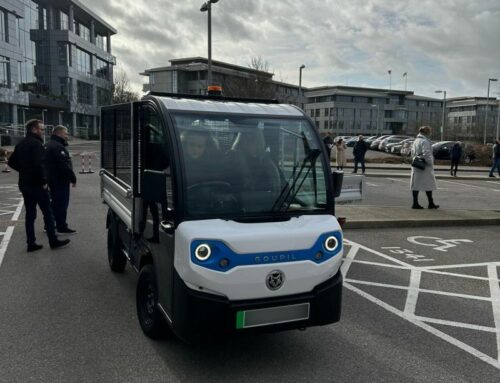IT can be a little daunting the first time you step into a van to drive it.
Look in the rear view mirror to check…uh-oh, of course, use those big door mirrors because there’s a bulkhead at the back.
And while vans are becoming more car-like to drive, if you’re carrying a heavy load a van becomes much less car-like when you start braking.
Now those people at IAM RoadSmart, who want to improve road safety, are on a mission to create the perfect driver. No, this doesn’t involve sewing assorted bits of racing driver together and whacking a few thousand volts through the them. Instead they have compiled a list of helpful tips for first-time van drivers.
Which we’d thought we’d share with you. So here are some great tips for first time van drivers.
Different driving position
They may have identical licence requirements, but a van is definitely not a car. The driving position is different, your view of the road is different, and you have to get used to having enormous side mirrors instead of a rear-view mirror. Make sure you take the time to get your seating position right before adjusting your mirrors to give you the best view of the road ahead, and behind.
A van will be different – check where the controls are
Finding out where all the controls are and what features your new van has is vital. To be fair the same applies when driving a new car too, but it’s still good advice. At 30mph you cover the ground at 45 feet per second. Just two seconds spent hunting for the light switch and you have travelled the length of two double-decker buses (or half an Olympic swimming pool if that’s your preferred unit of length) without looking at the road.
How big, how tall?
It’s a good idea to know how big the van is. Is it a standard or long wheelbase? How tall is it? Will it get into car parks with a height restriction? If you are used to driving a little city car then even the smallest of vans can feel enormous. Even if it means jotting the dimensions down and sticking them on the dashboard, knowing the size of your van can help avoid embarrassing and stressful situations.
Loading tips for a van
Think about how you load the van. Make sure heavy items are on the bottom and properly secured. Not only does it stop items moving around and damaging other goods, a shifting load can also destabilise your van as you drive. It’s also worth bearing in mind that the brakes are designed to stop the van when it’s fully loaded – if you’re driving around in an empty van you might find the brakes are a bit sharper than usual. If you are carrying any dangerous goods make sure you display the right sticker on the outside of the vehicle and your insurance allows you to carry them.
Keep your cool – don’t rush
“White Van Man” is a cliché best avoided so take your time. Rushing around won’t necessarily get you to your destination faster but it will cause you stress and tempt you to take risks. It will also annoy other road users intensely. A van doesn’t handle in the same way as a car so don’t try to drive it like one.
Speed limits – they’re different for vans
Before you put your foot down, check the speed limit. Depending on what sort of van you are driving the national speed limit on both single and dual carriageways can be lower than for a car. The limits for a van are 50mph and 60mph respectively, both 10mph slower than for cars, so every time you were overtaken by a van there is a good chance the driver was breaking the law. If you aren’t sure, check for which van speed limits apply in our article The law and van speed limits.
How to approach junctions in a van
Be careful at junctions. Without the benefit of side windows in the back it’s very easy to approach a junction at the wrong angle and find you can’t see what’s coming from one side or the other. Being at 90 degrees to oncoming traffic when emerging from junctions will give you a good view in both directions, especially important when crossing a dual carriageway. It’s also a good idea to position your van a little wider at junctions to avoid clipping the kerb.
Be a courteous van driver
The final tip can be summed up in one word: Courtesy. It’s not up to you to alter the perception of every single road user, but every little helps. Smile, be patient, and you can make a difference to road safety in your own small way.
Richard Gladman, IAM RoadSmart’s head of driving and riding standards, said: “We are often guilty of stereotyping drivers by the vehicle they drive and van drivers come in for more than their fair share of criticism. With a little bit of preparation and effort you can be remembered as the polite van driver who shared the road space nicely.”







Leave A Comment